Your garden can be more than a place for vegetables and greenery; it can also be a source of natural healing. Hidden among the flowers and herbs are medicinal plants with incredible benefits for your health.
If you’re curious about what’s growing right outside your door or you want to discover new herbal remedies, this list will inspire you. You might be surprised to learn how many useful plants are already in your backyard.
Chamomile, mint, aloe vera, and echinacea are just a few examples. Some bring fragrance and beauty to your garden, while others can be turned into soothing teas or simple home remedies.
Growing a small collection of medicinal plants not only makes your garden more vibrant but also gives you quick access to natural treatments whenever you need them.
#1 Chamomile
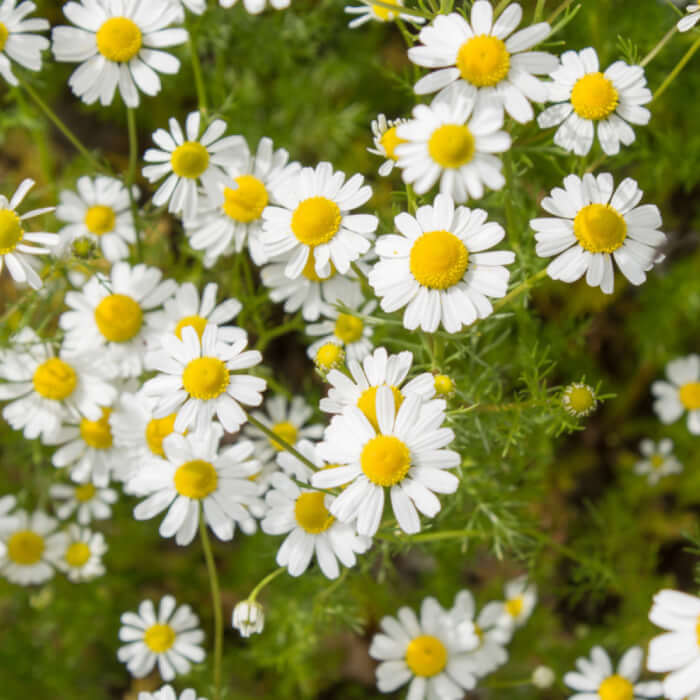 Chamomile is a pretty plant that emits faint smells of apples. This plant is among the oldest and most ancient medicinal herbs to treat many different kinds of ailments.
Chamomile is a pretty plant that emits faint smells of apples. This plant is among the oldest and most ancient medicinal herbs to treat many different kinds of ailments.
For example, used in tea, it has mild sedative and calming effects. Or treat several gastrointestinal issues, including indigestion, nausea, vomiting, diarrhea, and flatulence.
It also has pain-relieving properties for back pain, arthritis, and stomach cramps.
#2 Saint John’s Wort

Saint John’s Wort is a perennial flowering plant that blooms with yellow flowers on June 24 each year. It is widely regarded as a natural antidepressant for mild to moderate.
Besides, it also has broad anti-inflammatory action, helping to heal wounds and soothe redness, scaliness, acne, and other skin irritations.
#3 Echinacea
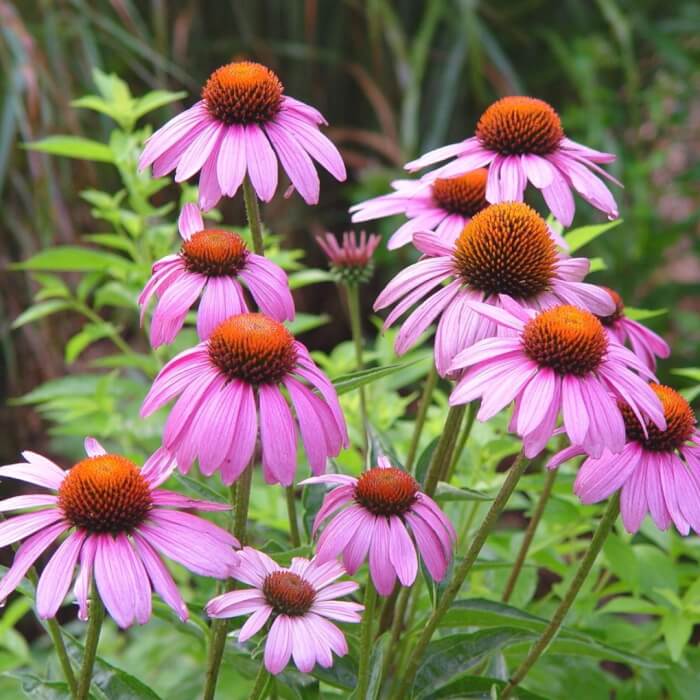
Echinacea is a flowering plant that belongs to the sunflower family; it is also commonly known as purple coneflower. Its stunning flowers are a favorite of the bees. All parts of flowers, leaves, stems, and roots have been used as herbal medicine.
You can dry them and make tea to boost the immune system. It is used to treat the common cold and flu, as well as coughs, fever, sore throat, bronchitis, and upper respiratory infections.
Its essential oils have antimicrobial, antiviral, and anti-inflammatory properties. Keep in mind that if it causes nausea or stomach pains after ingestion, stop using echinacea immediately.
#4 Yarrow
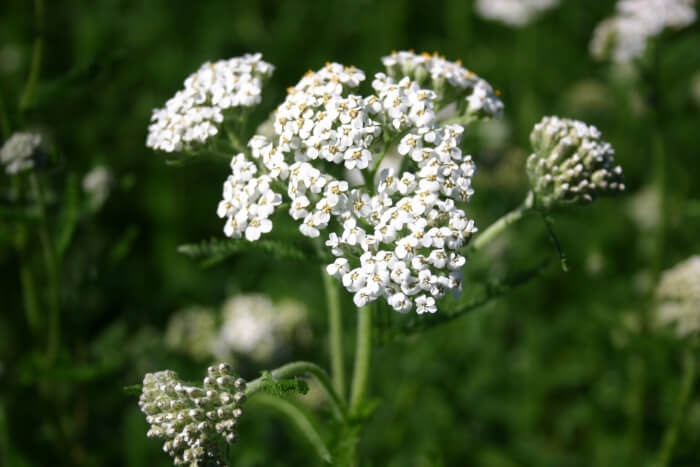
Yarrow is considered a medicinal herb. You can use it by making tea, adding 1 heaping teaspoon of dried (or 1 tablespoon fresh) leaves and flowers with one cup of boiling water, and letting it steep for 10 minutes.
Once cooled, apply it as a poultice directly to wounds, bruises, and other skin irritations. However, this flower may cause an allergic skin reaction in some people, so perform a skin patch test when applying it for the first time.
#5 Peppermint
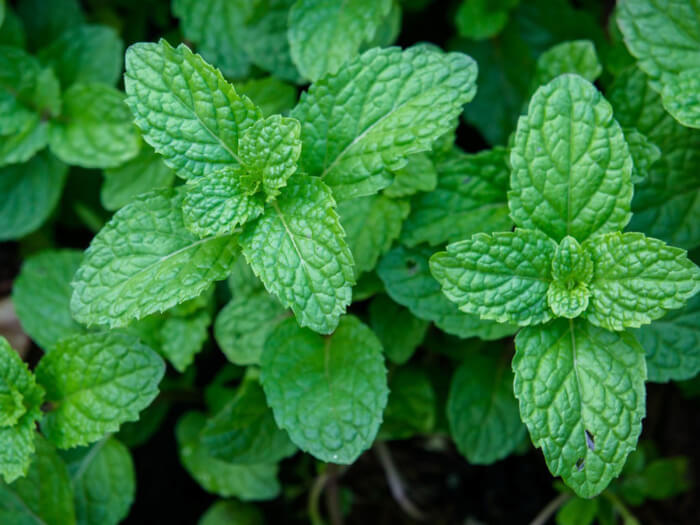
Peppermint is a tasty herb with plenty of medicinal value. It is used to treat a wide variety of ailments, such as aiding in the remedy of stomach cramps, nausea, diarrhea, irritable bowel, bloating, and loss of appetite.
Besides its antibacterial and antiviral properties, breathing in peppermint vapor helps open up nasal passages and ease congestion. It may be used to soothe the symptoms of bronchitis, sinusitis, and asthma.
It also possesses analgesic value for headaches and migraines. When applied topically, it helps relax the muscles to ease pain in the neck, temples, and forehead.
#6 Valerian
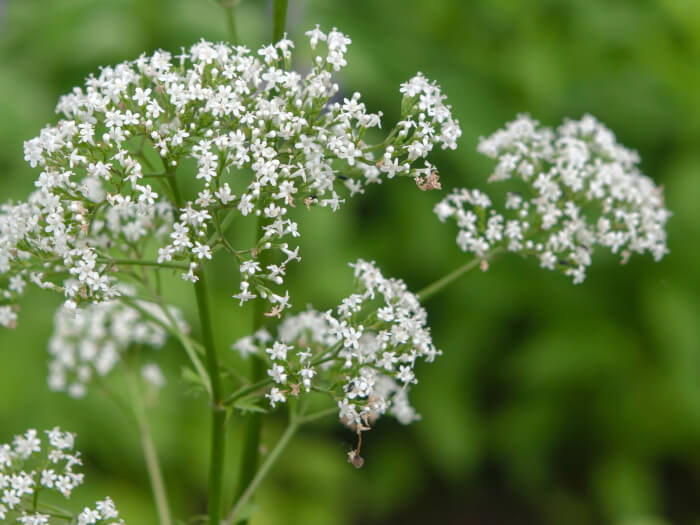
Valerian is a great medicinal herb. The roots of the valerian plant provide therapeutic properties such as treating insomnia and improving sleep quality.
It has also been used to treat anxiety, restlessness, headaches, heart palpitations, and mental distress. You can use it by making valerian tea; use 1 teaspoon of dried root with 1 cup of boiling water, and allow it to steep for 10 minutes.
#7 Aloe Vera
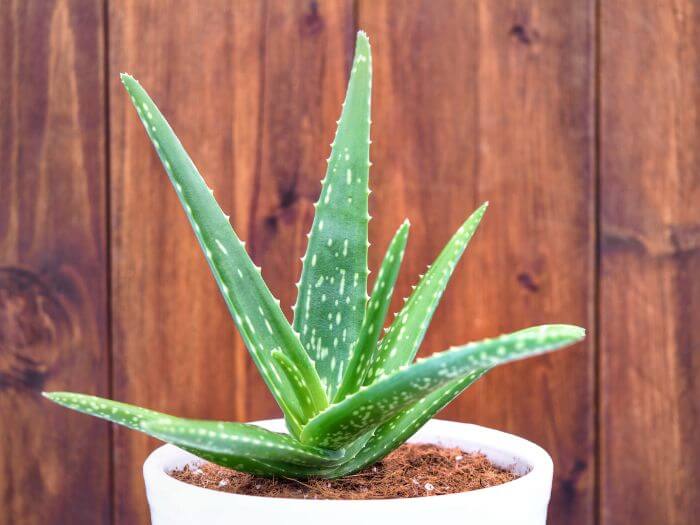
Aloe Vera is not only an attractive succulent but also known for its amazing skincare properties. Use it topically to soothe cuts and wounds, burns, frostbite, sunburn, rashes, insect bites, dermatitis, and other skin woes.
It helps moisturize the skin, alleviate pain, speed up the healing process, reduce inflammation, and prevent scars from forming.
